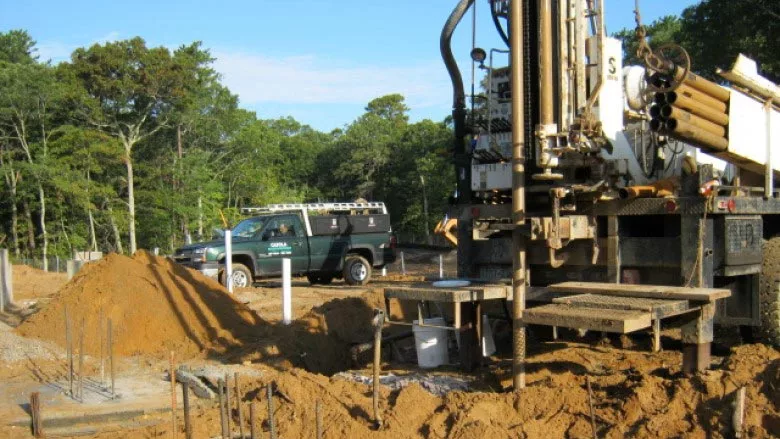Geothermal has High Potential, but Look before a Leap
Return on Time, Return on Investment Key Considerations

Federal and state incentives for geothermal make the outlook bullish, but it may require some investment to meet market demands if you’re just entering that sector.
Source: U.S. Fish and Wildlife Service - Recovery Act Team
Want to grow your business? Need to expand your business? Of course you do.
Let me set the terms. By “growing,” I mean increasing sales from your existing customer base or business sector. “Expanding” usually refers to delving into a new business area. For example, a groundwater contractor could expand into water treatment, blasthole or geothermal.
When I first started in manufacturing, our primary drill pipe sizes ranged from 3½- to 7-inches diameter. We served mainly groundwater, mining and construction. We occasionally produced other sizes — like 8⅝- and 10¾-inch diameters — but we were just not set up well to be competitive with folks who used those sizes. Most larger-diameter blasthole drilling happened in the Western states, and we were based in the East, so it hampered our ability to give these clients the service they expected.
Our major competitors — already well known in that market — were better set up to grab these orders. They had their own salespeople calling on the mines both in the U.S. and in countries like Chile where larger copper mines would place $1-million orders. These were obstacles for us to overcome.
We looked into the environmental drilling market, which typically uses smaller, shorter drill pipe. Their connections were also different like A-rod, N-rod, AWJ, NWJ and others. We would need thread gauges, smaller machine tooling and new customer base. We worked to reach out to this new base, but results saw poor results and decided not to pursue it further.
I talk about this as a lead-in to discussing expanding your businesses, whether water treatment, geotechnical, large-diameter boreholes, or geothermal HVAC. Groundwater drillers obviously can poke holes in the ground. But, how efficient are they compared to others? How connected are they to this market? Geothermal HVAC rebates are back, federally in addition to in some states. Are you interested in aggressively pursuing this market?
One complaint I hear from groundwater drillers is that the competitive price per foot is too low in geothermal drilling jobs. That may be true depending on your equipment, tooling and competition. Think about it. Say you run a rig with 150 feet of drill pipe in the carousel set up for 6¼-inch holes with a water well specialist. You may be trying to compete with a smaller rig with a 500-foot carousel and a less costly operator. That kind of competition would prove difficult especially for a larger geothermal project.
The amount of income per job is a mental factor. As a drill pipe manufacturer, we could produce just 10 5½-inch-by-30-foot blasthole pipes, and get the same income as 60 3½-inch-by-20-foot water well pipes or 300 AWJ drill rods. Of course, profits on all these products are based on percentages. That makes it tempting to think of all income as the same. However, I find the percentage of products sales in relation to time spent also important. It would take 70 hours to produce those 10 blasthole rods, versus 130 hours for 60 water well rods or 250 hours for 300 AWJs.
We look to expand for many reasons. Perhaps we want to add “& Son” or “& Daughter” to the company name. Perhaps you want a stronger, more agile business with a wider client or customer base.
Maybe as a contractor, you appreciate the occasional “off standard” job to fill in your scheduling gaps. Sure, the profits may not be as high but it beats having an idle rig and crew. The geothermal HVAC market has a ton of growth potential. You can passively approach it with a few jobs here and there, or make the investments needed to meet that market demands and aggressively go after it.
We look to expand for many reasons. Perhaps we want to add “& Son” or “& Daughter” to the company name. Perhaps you want a stronger, more agile business with a wider client or customer base. Before you take the plunge, consider what you require to get these jobs with better profit margins. Think about how you would set up an ideal geothermal drilling operation, and then see how that compares to what you have now.
Looking for a reprint of this article?
From high-res PDFs to custom plaques, order your copy today!





